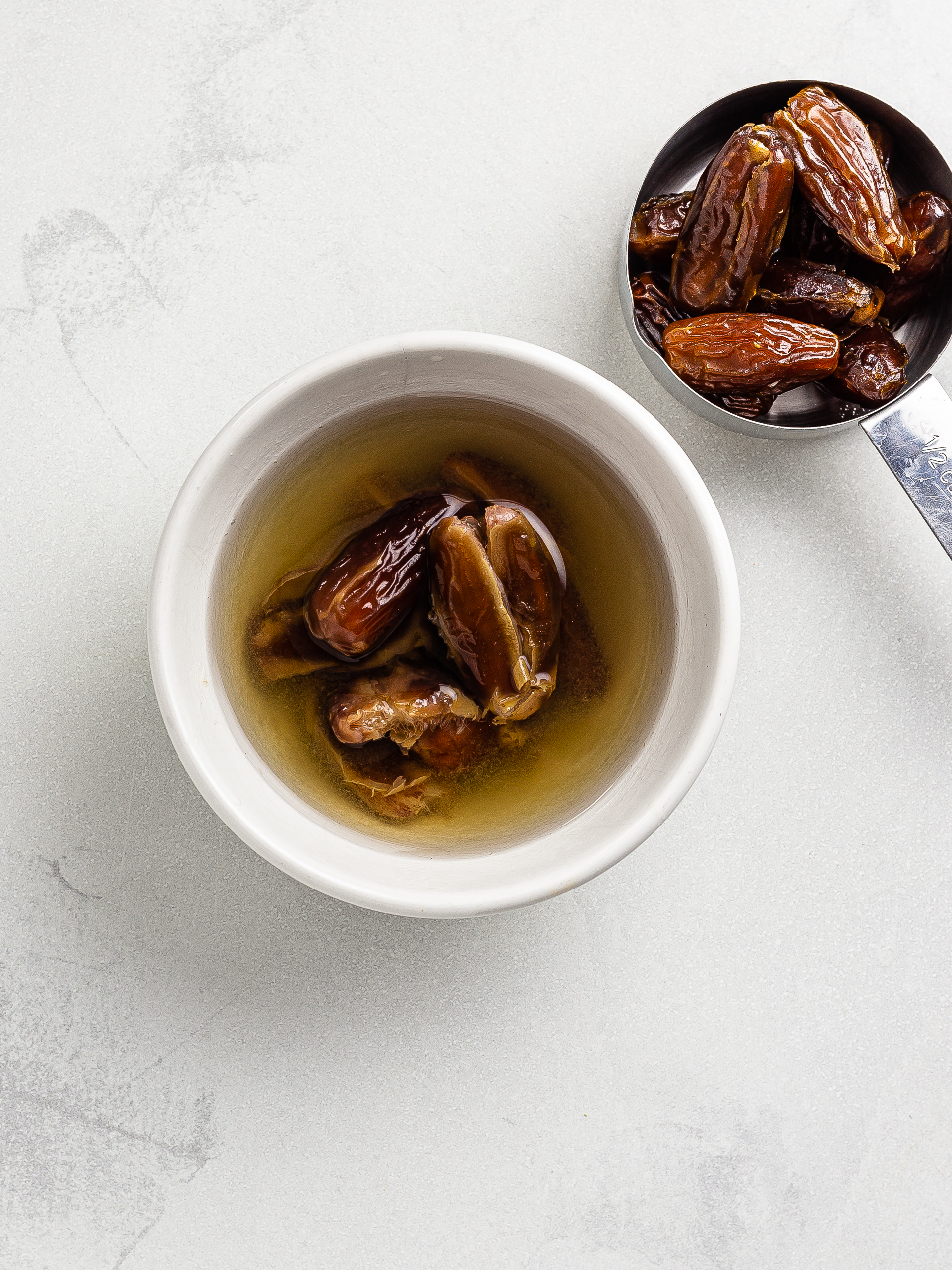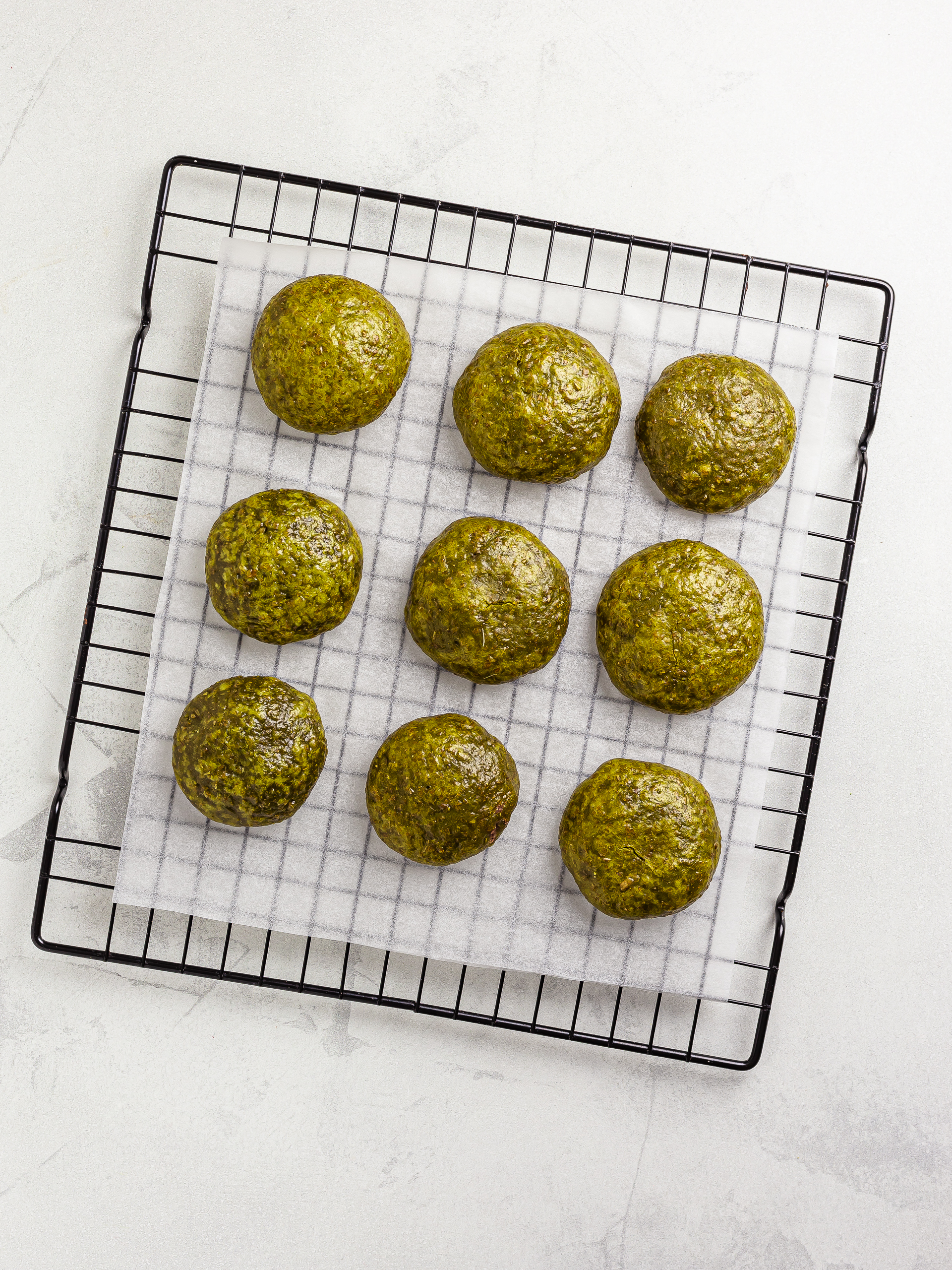Ever walked past a Japanese bakery only to gawk breathlessly at the precision and craftmanship put into those tiny perfect treats? Well, luckily, not all Japanese desserts require such skill. Today, we'll show how to make a simple yet delicious Japanese confection, called Manjū (Manjuu; Manju). We will make them with matcha powder and turn them into an energizing treat.
Manju is a steamed, fluffy bun filled with sweet red beans paste. It looks like a medium-sized pebble: flat at the bottom and round at the top. Not all manju buns are the same. Some folks make them with rice flour, others with wheat or buckwheat flour. Some recipes use eggs, and some don't. What traditional recipes have in common is anko — a paste of red beans and sugar.
As usual, we thought of making the recipe healthier and more diet-friendly. So our Manju are going to be eggless, vegan, and made without any refined sugars. If you want to make them gluten-free, you can borrow the dough from our gluten-free cannoli shells recipe, and replace the cocoa powder with matcha.
To make sugar-free matcha manju, we'll be making the red beans paste ourselves. We'll use date-paste instead of white sugar. You can make it using the traditional adzuki beans or the more common red kidney beans. In the instructions below we'll tell you how to do it with both raw or canned beans. Using canned beans is faster.
Dates are naturally sweet and have a medium-low glycemic index and glycemic load. As we didn't use too many dates, even people with diabetes can enjoy a handful of these manju buns per day without concern[1]. Therefore, these manju are perfectly suited to people on a diet.
Overall, the mix of proteins and matcha and the lack of refined sugars make our manju a healthy and energizing snack.
A single bun is rich with the boosting properties of green tea, has zero fats and only 6% RDI of sugar.
Plus, this could be your foray into the beautiful world of Japanese patisserie. For example, you could try these mochi flour cookies with matcha filling next!
For now, have fun following along our recipe below and enjoy our sugar-free manju buns.
What type of fillings can you use in manju?
The traditional manju filling is a red bean paste, also known as adzuki bean paste or anko in Japan. There are of course other jams and pastes you can use to fill your manju. Popular ones include:
white bean paste
chestnut paste
purple sweet potatoes (famous in Hawaii)
You can also use any jam of your liking, like strawberry! Matcha and strawberry would go very well together. Here are some of our sugar-free jam recipes you can use as a filling for these manju buns:
How to make manju sugar-free?
Making sugar-free manju is simple. You only have to make or use a sugar-free filling.
In the recipe above, we made our anko paste with dates instead of sugar. Using dates reduced the total amount of sugars in the recipe by over 30%. Moreover, the sugars in dates are much safer than those from plain white sugar, because dates are rich in dietary fibres. As you probably heard us say before, fibres help prevent the spike of blood sugar levels by slowing down digestion.
If you want to use other fillings, make sure you opt for sugar-free ones. In the FAQ section above, we have given you a list of some of our delicious sugar-free jams. Check them out!
How can I make manju without a steamer?
Don't have a steamer? Don't let that stop you! In our vegan momos recipe, we explain how to make a DIY steamer using common kitchen utensils.
Here is how you do it:
Put a cup inside a deep pot. The cup must be shorter than the pot.
Fill the pot with enough water to cover three-quarters of the cup.
Put a plate on the cup. The plate must be smaller the pot so that the steam can flow around freely. If you have something that looks like a plate with holes, use that instead.
Get a lid that matches the pot and line it with a towel.
Bring water to a boil, put the manju buns on the plate, and put the lid on.
Make sure the towel is not in contact with anything flammable.
Can I bake manju?
In most recipes, manju is steamed, like a dumpling. But some bake it as well. The difference between the two cooking technique is the final consistency of the confection.
Steamed manju are soft and sticky, while baked manju are more like crispy biscuits with a filling.
What is the difference between manju and mochi?
Mochi and manju look very similar. The main difference is that while manju dumplings can be made with multiple flours (rice, wheat or buckwheat), mochi is always made with mochigome, a short-grain glutinous type of rice.
Ingredients
| Dough | |
| All-Purpose Flour | 60 g |
| Wholemeal Flour | 40 g |
| Starch (Potato or Corn) | 20 g |
| Baking Powder | 1/2 tsp |
| Matcha Powder | 1 tbsp |
| Maple Syrup | 40 g |
| Almond Milk | 50 mL |
| Filling | |
| Dates | 60 g |
| Canned Adzuki Beans | 140 g |
| Water | 125 mL |
Step 1
Let's start by making the sugar-free anko paste.
Add the pitted dates to a bowl of boiling water and leave them to soak and soften for 10 minutes (1).
Next, drain them and add them to a food processor along with the canned adzuki beans and the given water.
Blitz the ingredients into a paste, add it to a pot, and cook it for 10 minutes while stirring. Ensure the water has reduced, and the bean paste is thick and reddish (2).


Step 2
For a smoother finish, you can now blitz the bean paste again.
Next, transfer it into a cheesecloth and tightly squeeze out any excess water, patting it dry with some kitchen paper (1).
The anko paste will be dry and quite compact, but soft enough for you to mould it (2).


Step 3
We recommend keeping the red bean paste in the fridge to harden for 10 minutes. This way, it will be easier to handle.
Now, let's shape the paste into small balls. To do so, scoop about one tablespoon or 16g (0.5oz) of paste and gently roll it in between your palms. We recommend washing your hands frequently with cold water to avoid getting the paste stuck to your hands.
Repeat this step until you have finished all the paste and you have as many balls as the number of servings.
Now, keep the shaped balls in the fridge while you prepare the matcha dough.

Step 4
In a bowl, combine all-purpose flour with wholemeal flour, starch, baking powder and matcha powder (1).
Then, incorporate the maple syrup, almond milk, and knead all into a smooth and pliable dough (2).


Step 5
Now, let's shape the dough wrappers.
Divide the matcha dough into 10 pieces by 20g (0.7 oz) each, or into as many pieces as the number of servings.
Roll each piece into a ball, flatten it down, and roll it out to a 9cm (3.5 inches) disc.
Make sure to roll out the disc's edges very thinly as they will overlap when you wrap the dough around the filling.
Keep any unused dough and the prepared wrappers covered with cling film to prevent them from drying out.

Step 6
Now, take one anko paste ball and wrap one dough disc around it (1).
Then, fold the dough as you would do for a dumpling and seal it in the centre pinching the dough edges together (2).
Finally, place the manju seam side down and lightly press it down to give it a dome shape. (3)



Step 7
Bring water to a boil in a large pot and then set up your steamer basket, lined with baking paper.
Then, arrange the matcha manju in the basket, leaving some space between them (1).
Close the lid and steam them for 15 minutes (2).


Step 8
Finally, transfer the steamed manju onto a wire rack lined with parchment paper and leave them to cool down completely before serving.

Tips
You can use 70g (2.5oz) of raw adzuki beans to replace 140g (5oz) of canned ones. Soak them overnight, drain, and simmer them for 10 minutes in a pot of boiling water. Then, drain the cooking water and add them back to the pot. Cover with water, bring to a boil and simmer for 40 minutes. Finally, drain the liquid and use the beans to prepare the anko paste as we did in our recipe above.
Store the matcha manju in an airtight container for up to 5 days.
For another filling idea, you can use yellow bean paste made with mung beans. It's delicious — give it a go!
